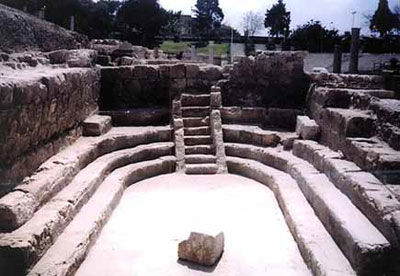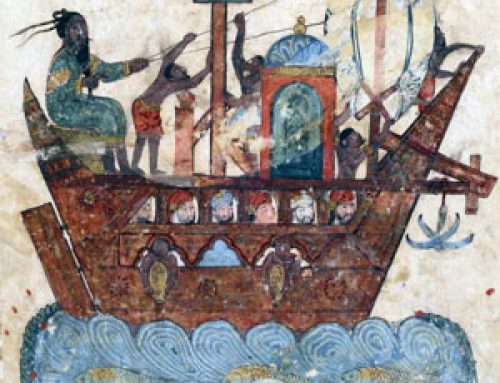
Eratosthenes of Cyrene went to school here! A classroom at the University of Alexandria (al-Ahram 2004).
Who was Eratosthenes of Cyrene?
Eratosthenes of Cyrene was born about 276 BC. He was born in Cyrene (modern Libya), in North Africa.
North African history
Early Egyptian science
African science and math
All our Africa articles
Chief librarian in Alexandria
When he was still young he moved to Alexandria, in Egypt. That way he could study mathematics and astronomy at the University of Alexandria. You can see one of the classrooms in the picture!
Alexandria’s university
Then in 236 BC, when he was forty years old, Eratosthenes of Cyrene became the chief librarian at the great library of Alexandria. Eratosthenes spent the rest of his life in Alexandria. He studied at the library. He helped other scientists with their projects too.
Eratosthenes got to know other scientists
Many other scholars also worked at Alexandria’s big university and library. Eratosthenes had the chance to get to know them. He seems to have known both Aristarchus and Archimedes. They were Greek astronomers who came to Alexandria, just like he did, to study mathematics and astronomy.
More about Aristarchus
Who was Archimedes?
Ancient Greek astronomy
History of astronomy
Eratosthenes and the circumference of the earth
Eratosthenes built on the work of Thales and Aristarchus. Aristarchus had shown that the earth was round. Aristarchus also showed that the earth went around the sun. Thales showed how to predict eclipses.
Who was Thales?
Erathosthenes was able to add a fairly accurate calculation of the circumference of the earth – how big around the earth was at the equator. He did his calculations using the angle of the sun at noon on the summer solstice – the longest day of the year – in two different locations.
More about circumference
How far away are the sun and the moon?
Erastosthenes also correctly calculated the distance from the earth to the sun and the moon.
More about the sun
And about the moon
The sieve of Erathosthenes
Eratosthenes also worked as a mathematician. Among other things, he invented an efficient way to discover all the prime numbers in a set of whole numbers. He showed a way to do that by multiplying smaller prime numbers. That way you could eliminate all numbers that were not prime. The numbers that were left would be the prime numbers. The animation here shows what that would look like.
More about prime numbers
Eratosthenes’ world map
Eratosthenes also drew an early map of the world. To help him in this project, he invented the idea of latitude and longitude.
The Mediterranean Sea and Europe
He had a pretty good idea of what the Mediterranean looked like. And he made sure to include Libya (where he was born). But there’s a lot Eratosthenes doesn’t seem to know about what the world looks like. So England (Britain) is much too big, and so is Ireland.

Copy of Eratosthenes’ map of the world
Scandinavia hardly exists at all. He doesn’t know about most of the Atlantic side of Africa, or South Africa.
Central Asia
Eratosthenes didn’t understand how big Central Asia was. He knew Ethiopia, the Scythians, and the Arabian peninsula.
More about the Scythians
India, China, and the Americas
He knew a little about India and Sri Lanka. But he doesn’t seem to have heard of China. Eratosthenes didn’t know about the Americas or Australia either.
Learn by doing: the earth-sun-moon dance
More about the Egyptian astronomer Ptolemy
Bibliography and further reading about Eratosthenes:
Greek and Roman Science, by Don Nardo (1998). Nardo has written a lot of good books about the ancient world for kids; this one is no exception.
Ancient Science: 40 Time-Traveling, World-Exploring, History-Making Activities , by Jim Wiese (2003). Activities, as the title says – how to make your own sundial, and so on. The author is a science teacher.
Early Greek Science: Thales to Aristotle, by Geoffrey Lloyd (1974).
History of Greek Mathematics: From Aristarchus to Diophantus, by Thomas L. Heath (1921, reprinted 1981). A lot of Euclid, but also describes who the other major Greek mathematicians were and what they did.
Episodes from the Early History of Mathematics, by Asger Aaboe (1997).



